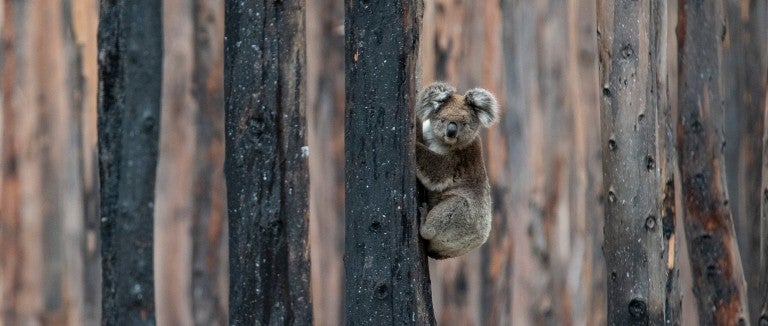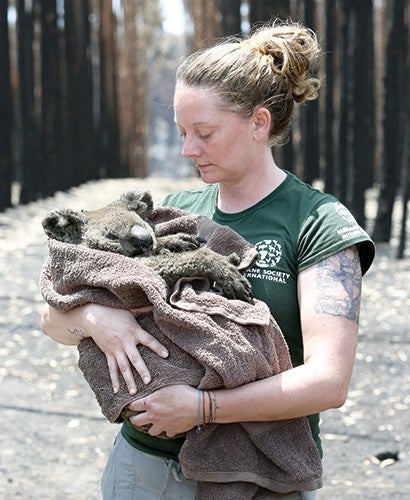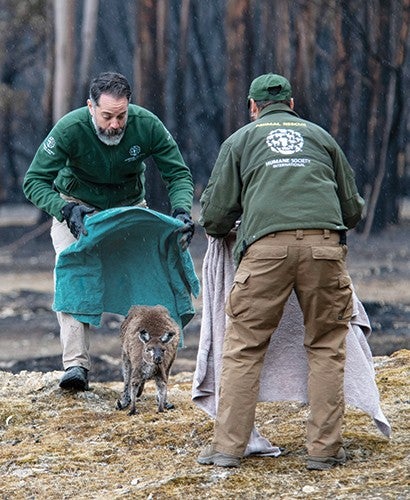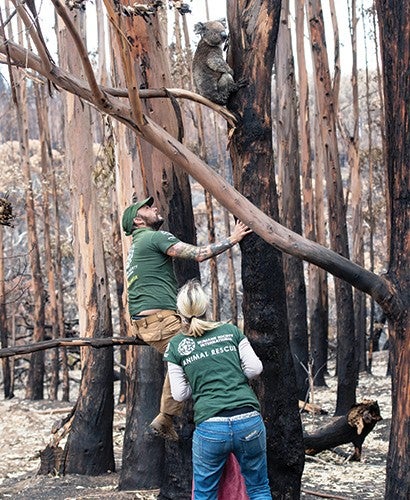|
WARNING: The following story contains graphic content. |
As devastating bushfires in late 2019 and early this year reduced Australia’s thriving, vibrant landscape into miles of scorched earth and destruction, rescuers from Humane Society International and HSI/Australia mobilized to help. They rescued injured animals from the smoldering landscape, transported them to local facilities for care and provided watering stations for any unseen survivors.
For every few animals who made it out alive, thousands were dead: An estimated 1 billion animals lost their lives.
While HSI and HSI/Australia continue to assist with long-term recovery, rescuers and others in the field share details from those early heartbreaking days on the ground.
We found hope and determination to keep searching.
Kelly Donithan
Every time we found an animal alive, it felt like a miracle.
Adam Parascandola
Want more content like this?
This was written and produced by the team behind All Animals, our award-winning magazine. Each issue is packed with inspiring stories about how we are changing the world for animals together.
Learn MoreSubscribe



